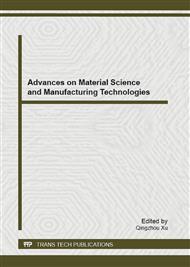[1]
YU Chao, TAN Zhong-fu, WANG Lu-hua. Factor decomposition model of energy intensity change in China [J]. Electric Power, 2010, 43(10): 1-5.
Google Scholar
[2]
BOYD G A, HANSON D A, STERNER T. Decomposition of changes in energy intensity: a comparison of the Divisia index and other methods [J]. Energy Economics, 1988, 10(4): 309-312.
DOI: 10.1016/0140-9883(88)90042-4
Google Scholar
[3]
Ma l er, K.G. Environmental Economics: a Theoretical l Inquiry [Z]. Jones Hopking University Press for Resource for the future. (1974).
Google Scholar
[4]
ZHANG Li-zi, HE Yong-jian, GE Ju. Co-integration relationship between energy demand and the main influence factors on it in China [J]. Electric Power, 2012, 45(2): 74-77.
Google Scholar
[5]
MA Hong-wei, MA Kai-ping. The co-integration and causality analysis between energy consumption and industrial development [J]. Application of Statistics and Management, 2010,29 (3) : 473-479.
Google Scholar
[6]
ZHANG Zhong-xiang. Why did the energy intensity fall in China's industrial sector in the 1990s? The relative importance of structural change and intensity change [J]. Energy Economics, 2003, 25: 625-638.
DOI: 10.1016/s0140-9883(03)00042-2
Google Scholar
[7]
NING Ze-kui. The energy-GDP co-integration analysis in China: based on comparative analysis on macro-data[J]. Statistics & Information Forum, 2010, 25 (3) : 81-85.
Google Scholar
[8]
TAN Zhong-fu, SONG Yi-hang. Analysis and Demand Forecasting of Coordination between Energy and Economy in Beijing [J]. Journal of North China Electric Power University( Social Sciences), 2011(4): 19-29.
Google Scholar


